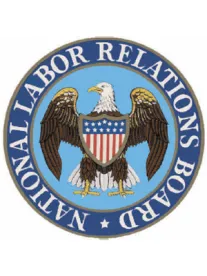Ever since the National Labor Relations Board (NLRB) blew open the joint employer concept last year in Browning-Ferris, it has been a rocky road for all involved to understand the implications of this new standard. The latest bump involves a question of jurisdiction: What happens when one of the joint employers is subject to the National Labor Relations Act (NLRA), but the other joint employer entity falls outside the jurisdiction of the NLRA?
The one clear takeaway is that if you are an employer subject to the NLRA, but you could potentially find yourself as a joint employer with an entity outside the jurisdiction of the NLRA, such a finding may not help you avoid the NLRA. How exactly the NLRB will consolidate these seemingly contradictory positions remains to be seen.
The primary employer in this latest bump provides cleaning and maintenance services as a services vendor to various air carriers at John F. Kennedy International Airport, where air carriers assert substantial control over the vendor’s operations. The intervening local unions argued that under the NLRB’s new joint employment test, this assertion of carrier control gave rise to joint employment with the air carriers, which are covered by the Railway Labor Act (RLA) and subject to the exclusive jurisdiction of the National Mediation Board (NMB). Thus, argued the unions, the RLA applies instead of the NLRA.
The NLRB rejected this argument, at least in part to avoid placing the vendor-employer in a jurisdictional “no-man’s land.” The NMB had previously rejected arguments that it had jurisdiction over the vendor under the NMB’s “carrier control” doctrine (which the NMB has aggressively diluted in recent years to the point that it is questionable whether the doctrine has any viability left). That is how the NLRB originally asserted its own jurisdiction over the employer.
The majority decision itself is one sentence in length, but it includes an unusual concurring opinion by NLRB Member Philip Miscimarra. In his concurrence, Member Miscimarra rejects the jurisdictional arguments in part because he “disagree[s] with the joint-employer standard adopted by the Board.” He concludes that the arguments by the local union based upon the new joint employer standard are well founded and that the Board fails to address this situation of mixed jurisdiction between two joint employers – notably, a situation that was predicted with eerie accuracy in the original Browning-Ferris dissent, hypothesizing about a “CleanCo” whose clients might be railways or airlines subject to the RLA.
In other words, only through Member Miscimarra’s rejection of the Browning-Ferris joint employer standard can he conclude the NLRA governs the vendor to the air carriers. The practical result here is that the vendor-employer does not fall into jurisdictional no-man’s land. Left unanswered however is how the NLRB will develop a workable standard underBrowning-Ferris when one of the joint employers falls outside the jurisdiction of the NLRA. The very control asserted by airlines over their vendors that can give rise to joint employment is inherently tied up with the actions of those airlines, who are not subject to the jurisdiction of the NLRA.





 />i
/>i
